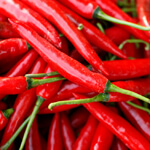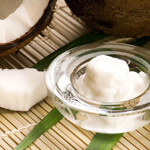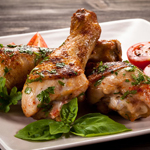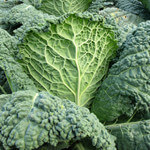 According to the Centers for Disease Control and Prevention, an estimated 67 million Americans – approximately one in three adults – suffer from hypertension, or high blood pressure. In 2009 alone, high blood pressure was the primary or contributing cause of almost 350,000 deaths in the United States, which averages at 1,000 deaths per day. The disorder is, in essence, an epidemic in the Western world.
According to the Centers for Disease Control and Prevention, an estimated 67 million Americans – approximately one in three adults – suffer from hypertension, or high blood pressure. In 2009 alone, high blood pressure was the primary or contributing cause of almost 350,000 deaths in the United States, which averages at 1,000 deaths per day. The disorder is, in essence, an epidemic in the Western world.
Though high blood pressure can be triggered by stress and other external factors, a poor diet remains its single greatest cause. Therefore, consuming foods that are proven to contain significant cardiovascular benefits is a great way to prevent and treat the disorder naturally. The best of these foods are listed below.
Foods That Reduce Blood Pressure
Garlic – This aromatic and pungent herb, which has been used for over 5,000 years as a medicine, is well known for lowering blood pressure. A pilot study published in Pharmacotherapy in 1993, for instance, found that patients who consumed a garlic preparation that consisted of 1.3 percent allicin (the sulfur compound responsible for so many of garlic’s benefits) experienced a reduction in sitting blood pressure 5 hours after the dose, and a significant increase in diastolic blood pressure between 5 and 14 hours after the dose. Moreover, a 2009 study in the Journal of Agricultural and Food Chemistry found that garlic’s cardioprotective properties were stronger in freshly crushed garlic than in processed garlic.
Hot chilies – Hot chilies are packed with capsaicin, an odorless compound that gives them their trademark heat. Capsaicin also happens to be a vasodilator, meaning that it can expand blood vessels and improve blood flow, and it is proven to treat countless cardiovascular issues – including high blood pressure. For example, a 2010 study published in Cell Metabolism found that long-term consumption of capsaicin could lower blood pressure in rats that suffering from genetic hypertension.
Generally speaking, the hotter the chili, the more capsaicin it contains. Cayenne pepper is an excellent choice of chili for lowering blood pressure, since its capsaicin levels are high enough to be effective in this regard but not so high that it is unpleasant to consume.
Cacao – This Central and South American superfood, which is usually consumed in powdered or nib form, is one of the most antioxidant-rich foods in the world and contains more than 300 phytochemicals. Given this nutritional power, it shouldn’t surprise anyone that the indigenous tribes of America considered cacao to be a medicine first, and a food second.
Cacao’s cardiovascular benefits, which are often attributed to its high concentrations of flavanols and magnesium, have been extensively studied. One 2011 study featured in Acta Medica Indonesiana showed that dark chocolate (of which cacao is the main ingredient) could decrease blood pressure in prehypertensive subjects after 15 days of consumption. Another 2011 study, published in Food & Function, found that cacao polyphenol extracts had a beneficial effect on arterial blood pressure among hypertensive rats.
Turmeric – Turmeric is a warm and peppery spice that is rich in curcumin. Like the capsaicin found in chilies, curcumin is a potent anti-inflammatory and vasodilator, and is great for treating cardiovascular conditions like high blood pressure. For example, a study featured in Nutrients in March 2014 discovered that curcumin could prevent elevated blood pressure and vascular dysfunction among mice suffering from cadmium-induced hypertension. According to a review in the International Journal of Cardiology, curcumin can also “ameliorate the development of cardiac hypertrophy and heart failure in animal models.”






